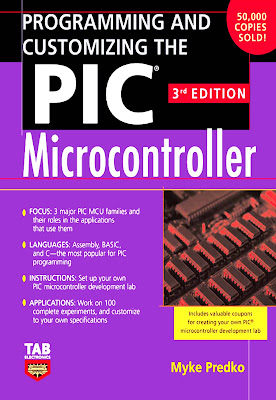 |
Programming And Customizing The Pic Microcontroller Myke Predko Reseña Tap into the latest advancements in PIC technology with the fully revamped Third Edition of McGraw-Hill's Programming and Customizing the PIC Microcontroller. Long known as the subject's definitive text, this indispensable volume comes packed with more than 600 illustrations, and provides comprehensive, easy-to-understand coverage of the PIC microcontroller's hardware and software schemes. With 100 experiments, projects, and libraries, you get a firm grasp of PICs, how they work, and the ins-and-outs of their most dynamic applications. |
| Written by renowned technology guru Myke Predko, this updated edition features a streamlined, more accessible format, and delivers: Concentration on the three major PIC families, to help you fully understand the synergy between the Assembly, BASIC, and C programming languages Con 100 experimentos, proyectos y librerías, obtenga una sólida comprensión de los PIC, cómo funcionan, y los pros y contras de sus aplicaciones más dinámicas. Escrito por el reconocido gurú de la tecnología Myke Predko, esta edición actualizada presenta un formato ágil, más accesible, y ofrece: La concentración en las tres familias principales de PIC, para ayudarle a comprender plenamente la sinergia entre el ensamblador, BASIC y lenguajes de programación C |
| INDICE |
|
| Consulta el Libro (9 MB) por: |
| Para los que usan Gestores de Descarga |
http://adf.ly/LZ5yW
http://adf.ly/LZ5yX
http://adf.ly/LZ5yY
http://adf.ly/LZ5yZ
|
INDICE GENERAL |
|
No hay comentarios:
Publicar un comentario
Me gustaría Saber: Quién eres y de Donde Eres. Deja de Ser un Anónimo. Que tengas un Buen Día.